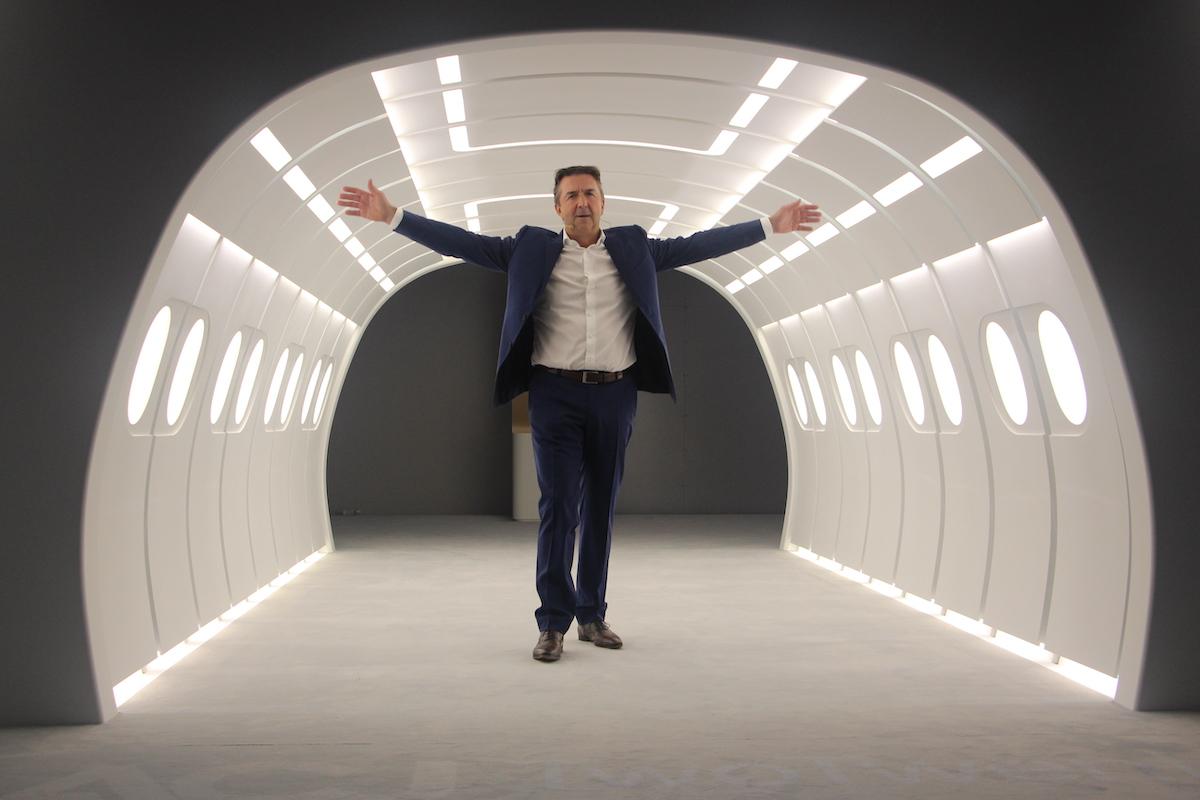
TOULOUSE—In the high-end bizliner market, 10 or 12 sales would qualify as a good year for a manufacturer. So, when Benoit Defforge, president of Airbus Corporate Jets, says he expects to be able to sell 10 of just one model of aircraft in a calendar year—without cutting into sales across the rest of its range—it is clear that the company believes it has a hit on its hands.
The aircraft that has got Dafforge and his colleagues at ACJ so excited is the ACJ TwoTwenty. And the reason for their bullish perspective on the likely market—for a jet which, as yet, has not been delivered in a business configuration—is threefold. "Between the budget, the space and the range, this aircraft is at the sweet spot," he says.
The bizliner territory that is traditionally fought over by ACJ and their colleagues at rival Boeing amounts to, Airbus reckons, about 400 in-service aircraft.
"It's interesting," Defforge says. "It's a niche market. It's the high end of our market. But it's a limited market. But if we go to the high end of the traditional business-jet market, it's more than 2,000 aircraft. And we are addressing this market with the TwoTwenty."
ACJ's argument is robust, and runs roughly as follows: Using pre-pandemic data, they estimate that over 95% of all bizjet flights could be operated on an aircraft with the ACJ TwoTwenty's range of 5,560 nm. Because the aircraft has its engines under the wing, 46% more cabin space can be used than on an aircraft with engines mounted to the rear of the fuselage, within a footprint only a few feet larger. The cabin is 15% higher and 50% wider than a Gulfstream G550. A favorite comparative statistic of Borna Vrdoljak, ACJ's head of marketing, is that at 55 in. the TV screen in the state room of a TwoTwenty is bigger than most beds in long-range bizjets.
The economic comparison also appears compelling. The company claims that the key operating costs of an ACJ TwoTwenty will be 33% lower than a long-range bizjet, despite its increased fuel consumption. Like Boeing, the company is able to leverage economies of scale, with plenty of commercial A220s already flying (the fleet will have surpassed 1 million flying hours before the first ACJ TwoTwenty is delivered to its customer early next year) and the training burden will be low. The company also believes the aircraft will command double the resale value of a long-range bizjet, while coming in at a comparable price.
With all the evidence laid out in this way, it may be difficult to understand why anyone would buy anything else. But, as ACJ's vice president of commercial, Chadi Saade, acknowledges, there are still some challenges to be overcome.
"At the end of the day, there is always a question of loyalty to a brand," he says. "It's not always easy for somebody to say, 'Hey, I've been flying Dassault for 20 years, I'm gonna switch.' There's always a small mental resistance, but I'm convinced we're going to break through that big time. The other important aspect is that there's no aircraft in service yet with a VIP configuration."
"We're especially pleased that the company taking the aircraft which is entering into service early next year is FIVE Hotels and Resorts—we're going to be showing that aircraft to the world, and they're happy for us to do that," Vrdoljak says. "Imagine, had we sold the first aircraft to a private individual—you don't get to see the inside of many of these aircraft."
In large part to bridge the gap between now and then, Airbus has set up what it calls its Creative Studio in Toulouse. This facility allows potential customers to stand inside their preferred ACJ TwoTwenty cabin configuration and to plan their own design choices down to the smallest finishing detail.
The Creative Studio is made up of three zones. In the first, a mock-up of a section of fuselage has a series of retractable screens fitted inside it: when pulled out, these represent the space available in the interior of a long-range bizjet, and when pulled back the full size of the TwoTwenty cabin can be experienced. Adjacent to this, eight projectors are fixed to gantries, and can project different notional cabin layouts onto the floor. When wearing an augmented-reality headset and holding a controller, a visitor can, in this area, examine a 3D rendering of their chosen cabin configuration—they can get down on their hands and knees and check how much space there is behind seats and under tables if they wish. Next to that, a lounge area, complete with U-shaped sofa as fitted into the aircraft, offers a chance to experiment with matching different cloth, wood and stone finishes by swiping samples against a code reader and seeing the changes to the design immediately applied to the cabin on a large flat-screen TV.
The concept is similar to that adopted successfully by London-based aircraft broker Steve Varsano. His The Jet Business showroom features a huge screen on which different options can be projected for customers. But where The Jet Business may be selling hundreds of different models, ACJ's Creative Studio is dedicated to just the one. Elements of the Studio are portable, and some of the design choices can be made and decisions taken online. But for the full effect to be felt, customers will have to take a trip to Toulouse.
"We will not capture all this market, for sure," says Defforge of the 2,000 aircraft he is aiming the TwoTwenty at. "But we offer a choice, an alternative. And I think we're a huge alternative."





